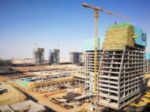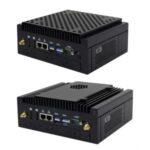DigiTech ASEAN Thailand 2022
DigiTech ASEAN Thailand 2022 is your key face-to-face exhibition & networking platform to re-connect and do business with the global tech and digital community and markets. The exhibition will be back at Hall 7 IMPACT Exhibition and Convention Centre, Bangkok, Thailand from 23rd to 25th November 2022. What is DigiTech ASEAN Thailand 2022? After over two years of physical absence due to COVID, DigiTech ASEAN Thailand 2022 will be back to showcase a comprehensive range of technology and digital solutions by over 150 exhibitors and brands to over 5,000 trade attendees /buyers/partners representing businesses of all sizes and industries. Organised under the theme “Connecting You with Global Tech and thew Digital Community”, Digitech ASEAN Thailand 2022 aims to help you re-connect with your market in a physical market setting and the same time, reach out to new customers and partners, in this digital transformation era. Who will be exhibiting at DigiTech ASEAN Thailand 2022? Software for business (CRM, HRD & HRC, Procurement & ERP, etc) Artificial Intelligence Cyber Security E-commerce & Digital Marketing, Data & Cloud, Smart Solutions & IoT 5G Technology & Network Conferences: By industry experts addressing challenges, trends and market opportunities Workshops: Knowledge and skill development workshops and masterclasses by leading tech and digital organisations. Certified Conferences: Upgrading digital skill-sets with latest knowledge, trends, best practices and processes. Technology Presentations: Sharing new technology, industry trends and business development ideas by key industry players. Webinar Series: Monthly technology and digital webinars by tech and digital gurus as well as key industry players VIP Buyers Program: Pre-Arranged Business Matching Meetings between VIP buyers and exhibitors For more information, please contact Ms Pinyaphat Meesingpattarakhun Tel. +6697-479-6445 or Email pinyaphatm@impact.co.th











